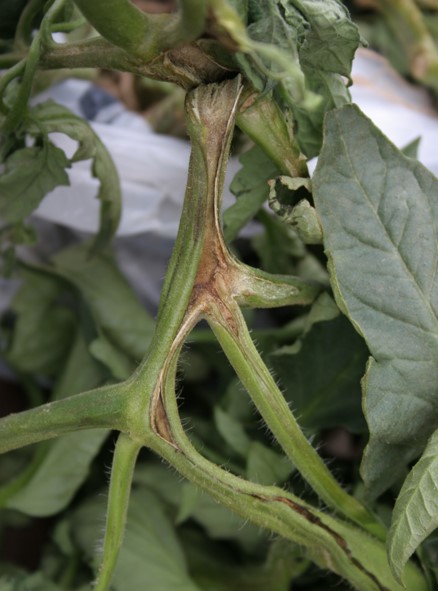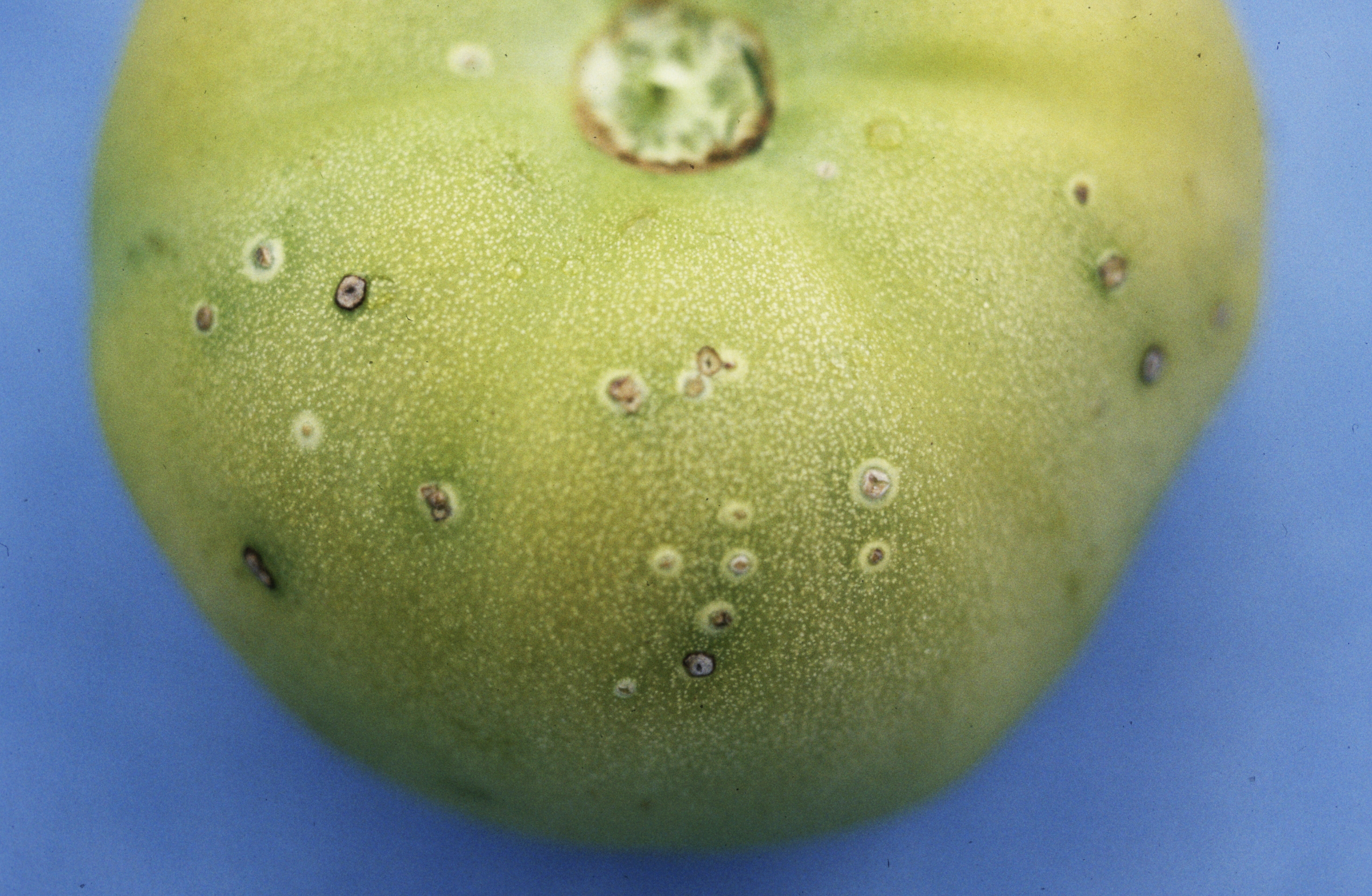Bacterial Canker
Return to Diseases
Bacterial canker (Clavibacter michiganensis subsp. michiganensis) causes wilting and marginal browning or necrosis (called ‘firing’) of tomato foliage; necrotic tissue may have a yellow border; leaves tend to curl upward. Elongated, tan lesions may also appear on tomato stems and petioles; lesions split and stem piths become grainy or pitted. Small (roughly 1⁄16 inch in diameter) raised lesions with white margins (called ‘birdseye’ spots) may appear on fruit. Seed infested with this bacterial pathogen, as well as contaminated, carried-over trellis materials, are sources of inoculum.
Note: This bacterial disease can become a significant greenhouse issues if bacteria are introduced via infested seed, transplants, or trellis materials. Thus, bacterial diseases are of particular concern for transplant producers or growers starting their own plants from seed. These pathogens can spread from initially infected plants through splashing water or by normal trellising activities. Transplants showing symptoms of bacterial diseases should never be set in the field or production greenhouse.
Bacterial canker causing marginal browning.
(Photo: Kenneth Seebold, University of Kentucky)

Bacterial canker causing "firing".
(Photo: Kenneth Seebold, University of Kentucky)

Bacterial canker causing pith necrosis.
(Photo: Kenneth Seebold, University of Kentucky)

Bacterial canker causing stem canker.
(Photo: Kenneth Seebold, University of Kentucky)

Bacterial canker causing fruit spotting.
(Photo: Mary Ann Hansen, Virginia Polytechnical Institute, Bugwood.org)
Management:
- Sanitation (debris removal and use of thoroughly disinfested trellis materials) is the most effective management tactic.
- Use pathogen-free seed and transplants.
- Apply labeled bactericide sprays to suppress secondary infections.
